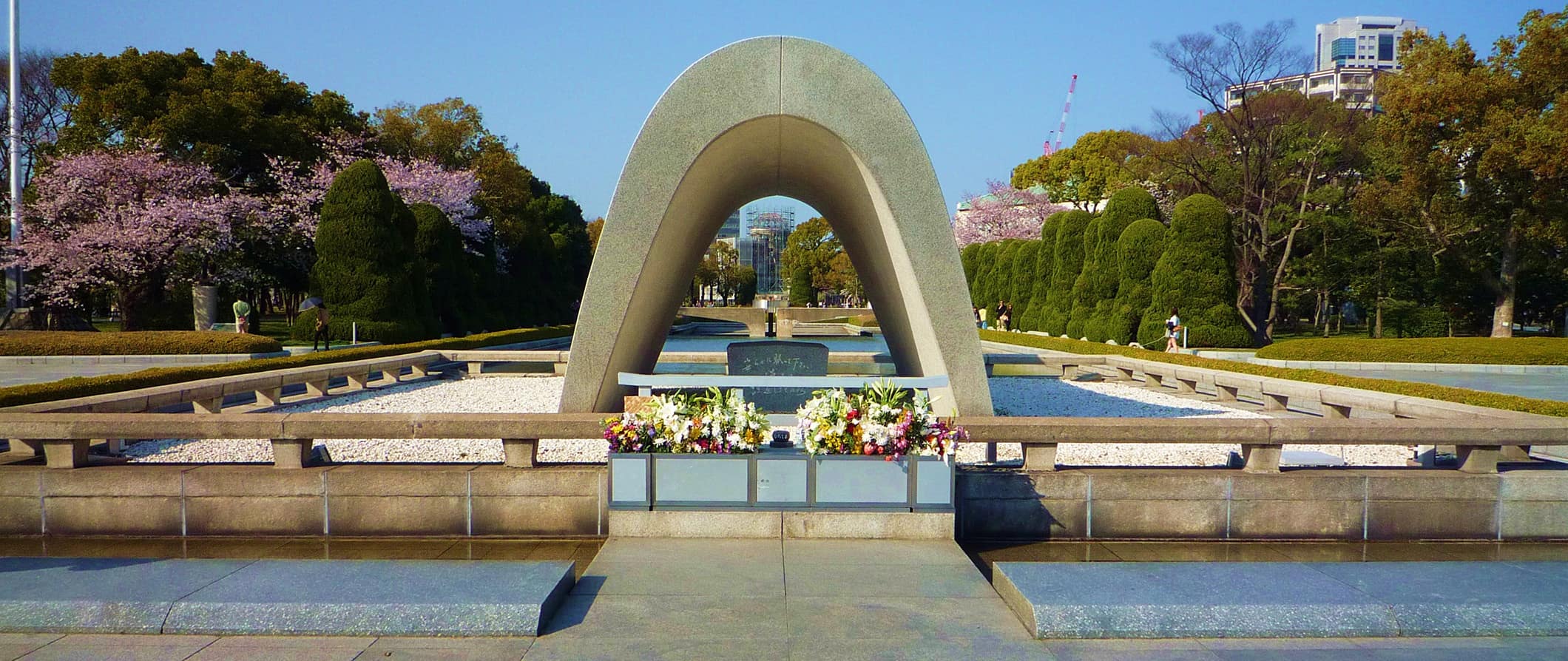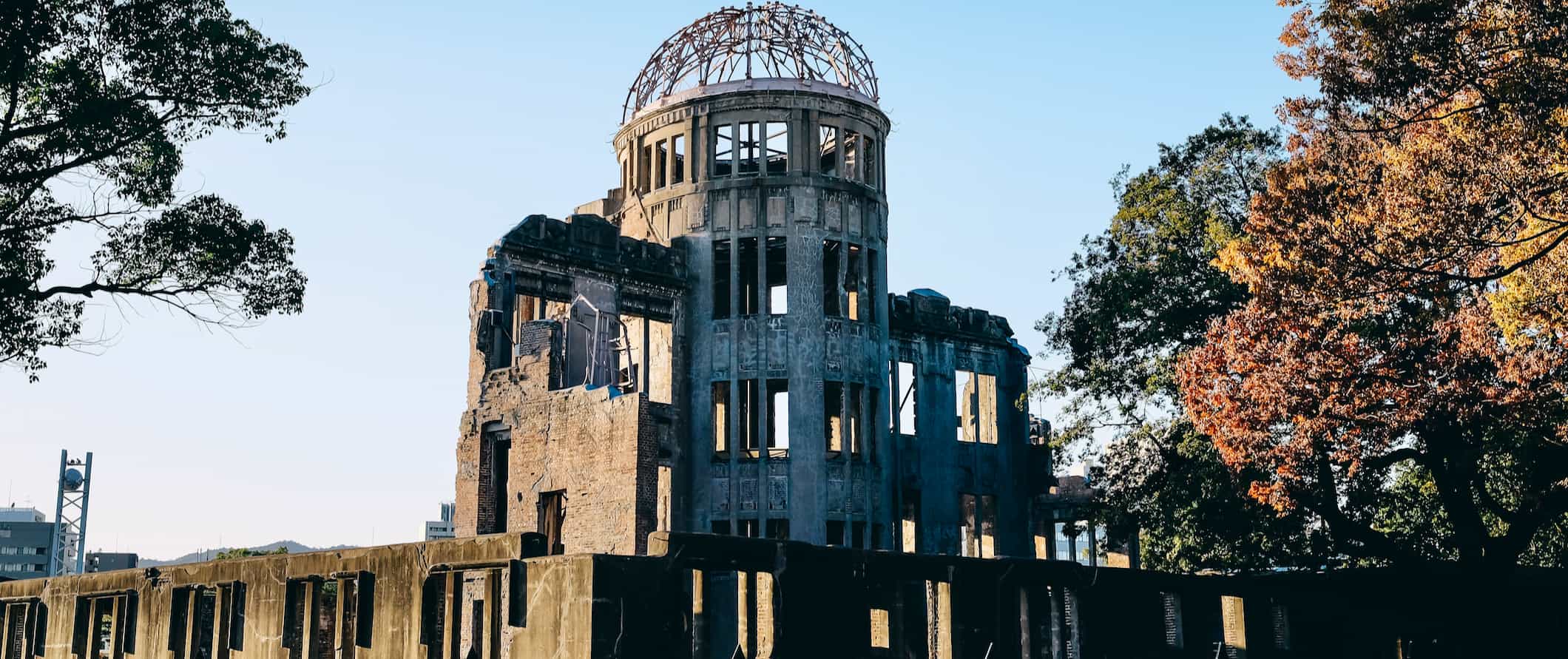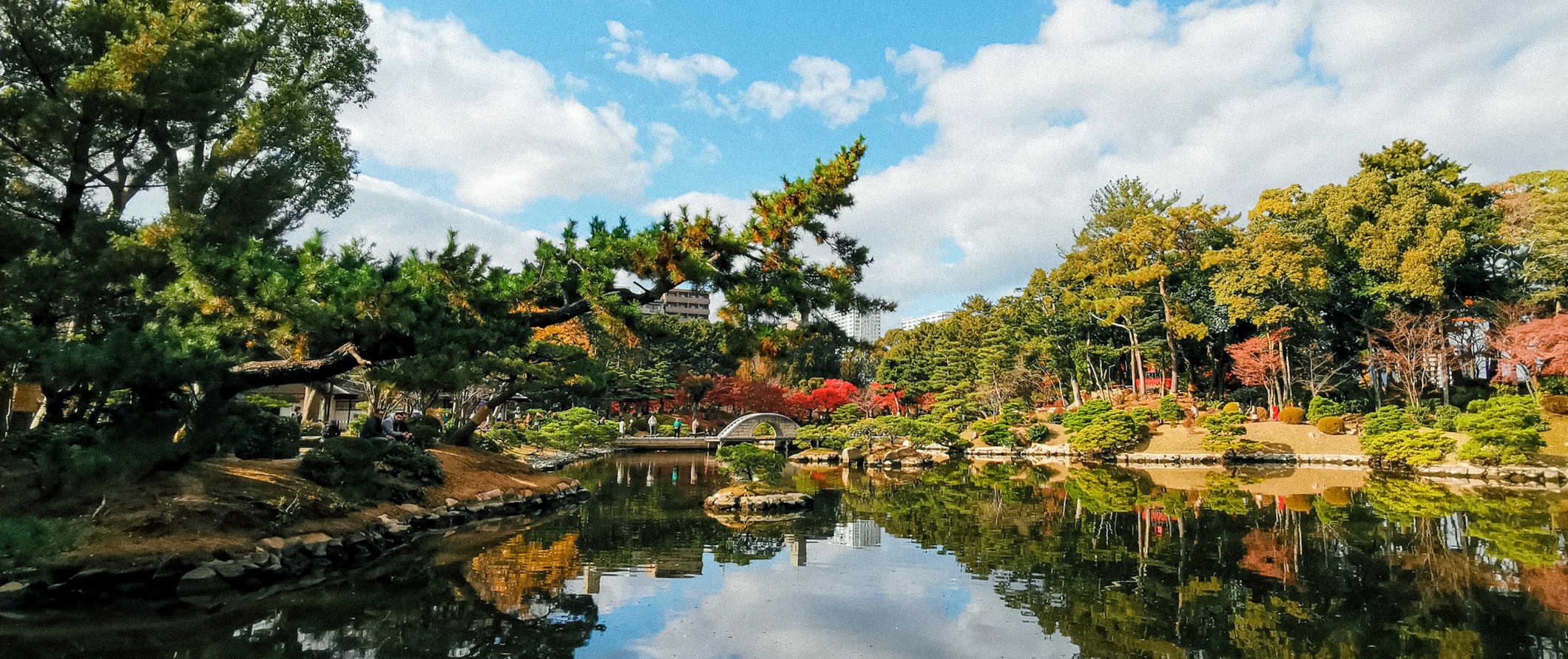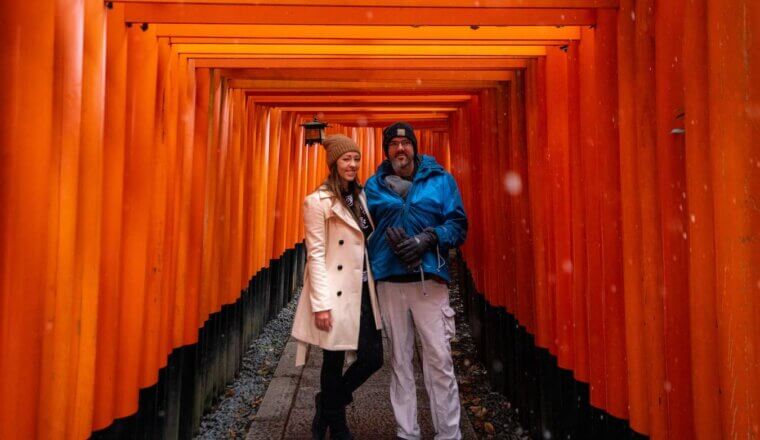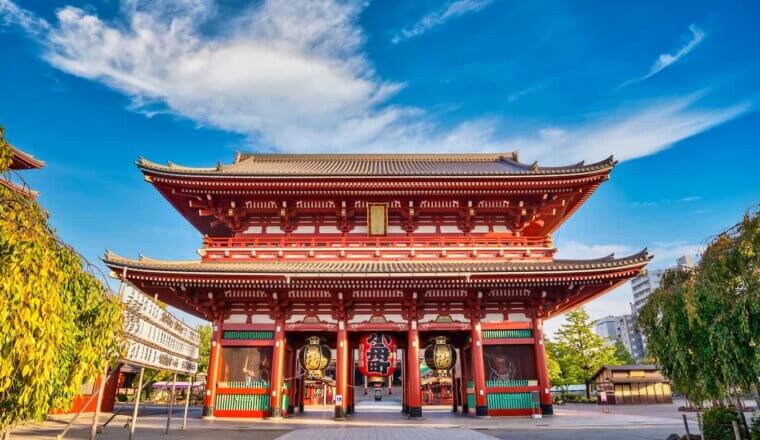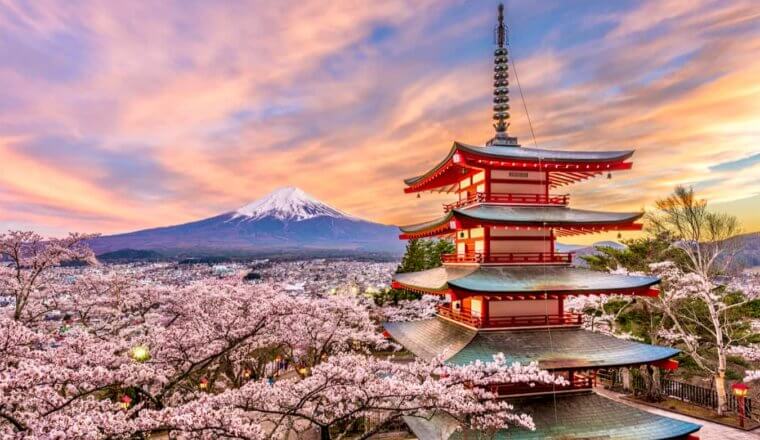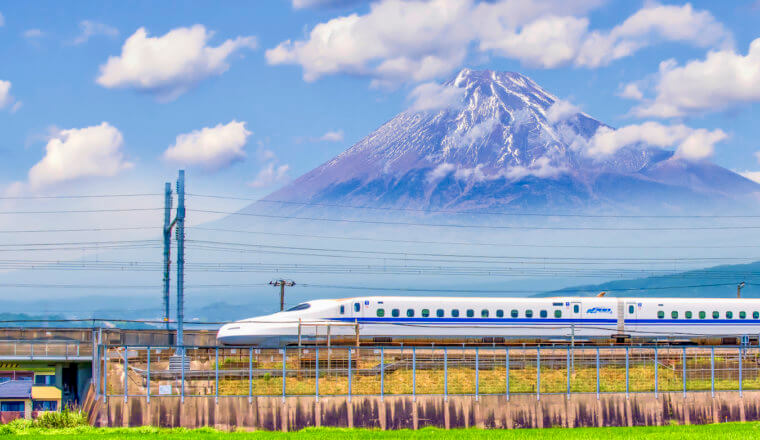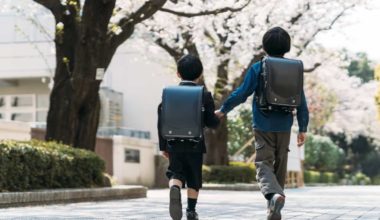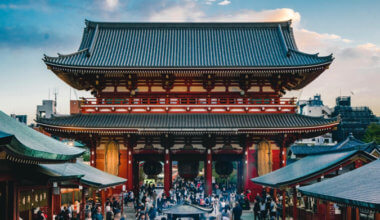Most people visit Hiroshima to learn about the atomic bomb that was dropped on the city by American forces in 1945 at the end of World War II. The memorial to the victims, centered around a bombed-out dome — the only structure that survived the blast — is sobering.
Despite this tragic moment in its history, Hiroshima today is a beautiful place. I really enjoyed my time exploring it, as there’s a lot to do here. From bars to museums to festivals to unique regional food, there’s a lot to fill a few days here. (That’s about all you need unless you really love the place!)
This travel guide to Hiroshima will help you plan your trip, save money, and make the most of your visit!
Table of Contents
Top 5 Things to See and Do in Hiroshima
1. Visit the Atomic Bomb Memorial Museum and Peace Park
Established in 1955, the museum depicts the history of Hiroshima before and after the atomic bomb was dropped in 1945. It also serves as a memorial to the over 140,000 people who lost their lives in the bombing. The museum has photos, artifacts, videos, and information about the effect the radiation has had on the population. It’s a very somber and sobering experience but one that should not be missed. Admission is 200 JPY.
2. Explore Miyajima Island
Miyajima is an island about an hour outside of Hiroshima that’s famous for its huge floating torii gate and shrine. If you plan to hike Mount Misen, expect to spend around 1.5-2 hours, depending on your level of fitness; there is also a cable car to the peak you can take for 2,000 JPY round-trip. Getting to the island from Hiroshima takes around 45-95 minutes depending on your method of travel. You can also take a full-day guided tour with JGA for around 12,000 JPY.
3. Wander around Hiroshima Castle
Although the original (which dated to the 1590s, was built primarily of wood, and was declared a national treasure in 1931) was destroyed by the atomic bomb, the reconstructed castle serves as a great opportunity to get to know Hiroshima’s history. The gardens are the best during the cherry blossoms in April. Admission to the castle is free, while access to the main keep is 370 JPY.
4. Relax in the Shukkeien Garden
This compact and beautifully landscaped Japanese garden is an ideal place to decompress from the atomic bomb sites. Established in 1620, it was once a private refuge for the emperor. It was opened to the public in 1940 and, after the war, was used to house refugees. Admission is 260 JPY.
5. Visit Onomichi
Located around 90 kilometers (56 miles) from town, Onomichi makes for a relaxing day trip from Hiroshima. Here you’ll find beaches, hot springs, temples, castles, and lots of green space. There is also a small mountain nearby (Mount Senkoji) that offers sweeping views over the city.
Other Things to See and Do in Hiroshima
1. Enjoy the Hiroshima Museum of Art
Founded in 1978, this museum contains eight galleries. Half of the collection is by famous Western artists like Monet, Degas, and Renoir while the other half is by Japanese artists. There is a small garden and a café here as well (the latter has free Wi-Fi too). Admission is 600 JPY.
2. Visit the Bitchu Matsuyama Castle
Not only is this Japan’s highest castle but it’s also one of its only remaining original ones. It was originally built on a nearby mountain in 1240 by Akiba Shigenobu. In 1929, restoration work began, and it is now a popular tourist site. Fun fact: the official “lord” of the castle is a stray cat found to be living there. Admission is 500 JPY for just the castle or 1,000 JPY for the castle, temple, and nearby samurai houses. If you’d like to visit the Takahashi Folk Museum and Yamada Hokoku Museum, the entire combined ticket costs 1,500 JPY.
3. Attend the Oyster Festival
If you’re passing through Hiroshima in February, make sure to check out this fun event on Miyajima Island. It basically celebrates how awesome oysters are, so if you like them, you need to go! There are tons of kinds to try, all of which are freshly caught. The festival is free to attend, and during it, you can enjoy oysters at a huge discount. Expect to pay 100-200 JPY per dish.
4. See the Mazda Museum
Mazda’s corporate headquarters are a short distance outside of Hiroshima. If you like to geek out over cars, its tour is a cool thing to do. The English version isn’t very detailed, but it’s nevertheless a fun experience. You’ll get a look at some concept vehicles as well. If you have a lot of serious technical questions, try taking the Japanese tour and bring along your own interpreter. The tour is free but must be reserved in advance.
5. Get active in Chuo Park
This green expanse in the middle of Hiroshima is home to Hiroshima Castle, Gokoku Shrine, a few museums, and walking and running paths. Often there are football, soccer, and even frisbee games going on, and it’s a great place for a picnic if the weather is nice. In the spring, it’s also where you’ll find some of the famous cherry blossoms. Bring a book, pack a lunch, and spend some time here relaxing, people-watching, and taking in the goings-on.
6. Attend the Flower Festival
Another major annual event in Hiroshima, this festival occurs during the first weekend of May. There is an array of performances, ranging from Japanese pop bands and jazz combos to comedians and traditional musicians from Okinawa. There’s a huge carnival, food vendors, and novelty craft stalls, as well as a large display and vigil in Peace Park. The festival has a very lively, Carnival-esque atmosphere. Admission is free.
7. Tour the Hiroshima Manga Library
If you’re into manga, this is the place to be. While the vast majority of the 130,000 in the collection is in Japanese, there is a selection in English as well. You’ll also find all sorts of rare and vintage works here too. Opened in 1998, the library also holds regular events such as presentations, talks, and temporary displays. Admission is free.
8. Visit Fudoin Temple
The origins of a temple in this location date back to the eighth century, though the current one is from the 14th century. The temple is actually one of the few buildings in the area to have survived the atomic blast and is registered as an “Important Cultural Property.” It has the standard red lacquered pagoda, but there are some interesting statues and shrines at the back, including a red torii gate and a fox shrine. The serene grounds offer a nice place to stroll, but be respectful and give worshippers their space.
9. Attend the Sake Festival
The suburb of Saijo is famous for its sake breweries (it’s one of the most famous brewery districts in the country), and in October it hosts an annual boozy blowout. For the price of entry, attendees can drink their fill of sake from the local breweries, as well as over 900 varieties from all over the country. Outside the festival area, tours of breweries are also available, with wood sake cups as souvenirs. There are also traditional performances, live music, presentations, talks, and lots of partying. Tickets are 2,100 JPY (or 1,600 JPY in advance).
10. Climb Mount Haigamine
This mountain overlooking Hiroshima is a popular place to come at night to take in the view. You’ll get a sweeping panorama of the surrounding landscape, making it a great spot for taking photos and relaxing after a day of exploring. It takes about 90 minutes to climb, so be sure to do so while the sun is still up. There is also a small parking lot should you wish to drive up.
11. Take a walking or bike tour
Walking and bike tours are my favorite way to get to know a new place. You gain perspective and insights from a local guide, meet other travelers, and learn a ton about a new place in the process! While there are currently no free tours offered in Hiroshima, you can take a cycling tour with Attractive JAPAN focused on the bombed heritage sites or a customized guided walking tour with Lokafy.
For more information on other cities in Japan, check out these guides:
Hiroshima Travel Costs
Hostels – Most hostels in Hiroshima charge 3,000-5,000 JPY per night for a dorm bed (regardless of size). For a private room with a twin or double bed, expect to pay 9,000-12,000 JPY per night. Prices are about the same year-round, though they rise during special events and rooms fill up quickly.
Free Wi-Fi is standard, as are lockers and self-catering facilities if you want to cook your own meals. Most hostels in Hiroshima have modern, pod-style beds with outlets, reading lights, and privacy curtains.
Budget hotels – Capsule hotels start at 2,500 JPY for a tiny pod that is essentially just a bed. It’s not fancy, but it’s a unique (and very Japanese) experience. If you’re looking for a regular budget hotel, expect to pay around 5,500 JPY for a double room at a two-star hotel with standard amenities like free Wi-Fi and TV.
Airbnb is heavily regulated in Japan and, as such, there aren’t too many options, mostly hotels and guesthouses. A private apartment or home usually rents for 20,000 JPY per night at a minimum, while a private room is at least 12,000-14,000 JPY.
Food – Japanese cuisine is world-renowned and has even earned a spot on UNESCO’s Intangible Heritage List. While each region has its own specialties, rice, noodles, seafood, and seasonal produce all feature heavily no matter where you are.
Food in Japan is relatively inexpensive so long as it’s not imported (fresh fruit will set your budget back!). The most common cheap eats include curry, donburi (bowls of meat and rice), and ramen. Curry and donburi bowls cost 500-700 JPY, while ramen or soba noodles are usually around 1,200 JPY.
In Hiroshima, oysters are a specialty, and over two-thirds of Japan’s harvest comes from here. Try the local hot pot dish known as kaki no dotenabe, which features oysters simmered in an earthenware pot. Some restaurants also serve a set meal of grilled oysters, breaded and fried oysters, and pickled oysters for about 2,500 JPY.
Hiroshima is also known for its own version of okonomiyaki (a meat dish with soba or udon noodles), which costs about 1,200-1,700 JPY per course.
There are also many cheap places to eat out in Hiroshima. Head to the Okonomi Village, a massive food hall with three floors of street food, including traditional Japanese pancakes, soba noodles, ramen, pizza, and oyster dishes for 800-1,500 JPY.
If you are on a tight budget, 7-Eleven can be your go-to “restaurant.” You can also find plenty of cheap meals and prepackaged items there (that the locals actually eat!). Noodles, rice balls, tofu, and prepackaged sushi are all available for only 250-500 JPY. Fast food (think McDonald’s) is around 800 JPY for a combo.
Midrange restaurants cost around 2,000-3,000 JPY per person for three-course meals. Sushi conveyor-belt restaurants (which are super fun) charge 150-620 JPY per piece.
High-end omakase restaurants will set you back at least 10,000 JPY, though most are closer to 20,000 JPY.
Domestic beer is around 450-550 JPY, and sake is around 800-900 JPY. Cocktails cost about 1,200 JPY. A latte or cappuccino is 500-600 JPY; a bottle of water is 100-130 JPY.
Buying groceries costs 4,500-6,000 JPY per week for basic staples like rice, vegetables, and fish. Just be sure to wash all your produce well. Japan uses a lot of chemicals on its produce, as there is not much arable land in the country and agricultural practices rely on peak productivity (hence pesticides).
Backpacking Hiroshima: Suggested Budgets
If you’re backpacking Japan, budget around 7,000 JPY per day. On this budget, you’re staying in a hostel dorm, cooking all of your meals, eating at the cheap 100-yen shops, visiting free museums and temples, skipping drinks, and using public transportation to get around. (If you plan on drinking, add another 500-1,500 JPY per day to your budget.)
On a midrange budget of 13,500 JPY per day, you can stay in budget hotels or private hostel rooms, eat out for some meals, enjoy a few drinks, visit more attractions (like the castle and the atomic bomb memorial), rent a bike, and just have some more breathing room in your travels.
On a “luxury” budget of 29,000 JPY per day or more, you can stay in traditional Japanese accommodations or hotels, eat wherever you want, enjoy drinks as often as you want, take paid tours and taxis, and overall just have a more comfortable trip. This is just the ground floor for luxury though — the sky’s the limit!
Hiroshima Travel Guide: Money-Saving Tips
Japan isn’t a super cheap destination and Hiroshima is no exception. But there are plenty of ways to save money. Japan does an excellent job of keeping itself affordable. Here are some money-saving tips for Hiroshima:
- Get the Hiroshima Tourist Pass – If you plan on using a lot of public transportation, get this pass. There are three versions: one for the city, one for the nearby areas, and one for the entire prefecture. Prices range from 1,000 to 2,000 JPY (for 24-72-hour passes) per person, covering buses, trams, and the metro. It also comes with a small guidebook to ensure you see all the best sights the area has to offer.
- Get a JR Pass – Chances are you’ll be arriving in Hiroshima by train. If that’s the case, consider buying a Japan Rail Pass. These provide unlimited train travel and can save you a ton of money if you’re going to be visiting other cities in addition to Hiroshima. It comes in 7-, 14-, and 21-day versions. You can buy the pass at a limited number of places within Japan, but it’s cheaper to purchase online ahead of time!
- Shop at the 100-yen stores – There are many 100-yen shops (like dollar stores) in Hiroshima, with meal sets, groceries, drinks, toiletries, and household items. Store names vary by region, so ask your hotel or hostel reception where the nearest “Hyaku En” shop is.
- Eat at 7-Eleven – 7-Eleven, Family Mart, and other convenience stores have a lot of prepackaged meal sets (including sandwiches, soups, fruit, and more traditional Japanese items) that make for a cheap lunch option. Additionally, supermarkets also have many such meals at similar prices.
- Cook your own meals – Almost every hostel here has a kitchen where you can cook your own food and cut your expenses. Combining this with shopping at the 100-yen stores can drastically reduce your food costs.
- Eat curry, ramen, and donburi – I essentially lived off these three foods during my time in Japan — and you can do the same in Hiroshima. These are the best ways to eat cheap, filling meals.
- Buy food at night – After 8pm, most supermarkets discount their fresh food, as they have to get rid of it. If you buy your food after 8pm, you can save 10-20% on prepared meals and certain fresh foods.
- Bring a water bottle – The tap water here is safe to drink, so bring a reusable water bottle to save money and reduce your plastic use. LifeStraw makes reusable bottles with a built-in filter, so you always know your water is clean and safe.
- Work for your room – Many hostels in Japan often let you work for your room. You’ll spend time in the morning cleaning and get free accommodation for as long as they’ll let you stay. This is a great way to save money if you want to stay in the same area for a while.
- Stay with a local – Using hospitality sites like Couchsurfing allows you to stay with locals, so you not only get a free place to stay but you get to interact with residents and learn about their life. Make sure you ask far in advance as the response rate is not great there. Try asking in Facebook groups too. You might have luck finding a host there.
Where to Stay in Hiroshima
Hiroshima has a few hostels, and they’re all pretty comfortable and sociable. These are my suggested and recommended places to stay in Hiroshima:
How to Get Around Hiroshima
Public transportation – Buses and trams are the most common forms of public transportation in Hiroshima. There are two major bus companies and six tram lines that cover the entire city, making it easy to get around. Prices vary depending on how far you’re going, but expect to pay 220 JPY per ride on the tram. You can also get a one-day unlimited tram pass for 700 JPY.
Hiroshima sightseeing loop buses, called meipuru-pu, go to all the major attractions. Without a rail pass, these cost 200 JPY per ride (330 JPY for the blue line) or 400 JPY for a one-day pass.
They also offer a tourist pass if you plan on using a lot of public transportation. There are one-, two-, and three-day options for 1,000-2000 JPY.
Hiroshima has a single-line metro system called the Astram Line. It has 22 stations and operates from 5:30am to midnight. Prices vary depending on your journey, but tickets start at 190 JPY per person. It’s clean, safe, and reliable (like all public transportation in Japan).
Bicycle – Hiroshima is quite easy to get around by bicycle, and you can rent a bike for the day for around 2,000 JPY (2,500 JPY for an e-bike). You can also get a one-day pass for the Hiroshima bike-share system for around 1,500 JPY. Just remember that traffic here drives on the left!
Taxi – Taxis aren’t cheap, so I would avoid them as much as possible. Rates start at 620 JPY and go up by 280 JPY per kilometer. Stick to public transportation if you can.
Ridesharing – Didi is the main ridesharing app, though Uber does operate as well. Prices are similar to taxis, so you won’t really save any money this way.
Car rental – If you have an International Driving Permit (IDP) before you arrive, you can rent a car. Expect to pay around 6,500 JPY per day. Just keep in mind that you’ll be driving on the left. But unless you have a specific need for a car, I would stick to public transportation and trains (which are usually much faster than cars).
For the best car rental prices, use Discover Cars.
When to Go to Hiroshima
The most popular time to visit Hiroshima is in the summer; however, it can get quite warm. Temperatures in June-August are over 30°C (86°F), and it’s rather humid. Even September is quite warm as well, so be prepared for the heat. Rain is common from mid-June to mid-July, though not every day or in any quantity that will impact your travels.
The shoulder seasons are probably the best time to visit Hiroshima. April-May and October-November see cooler temperatures and only a little bit of rain. Late March to early April is cherry blossom season, so expect massive crowds and be sure to book ahead!
While the winter in Hiroshima is cold, it is hardly unbearable. Temperatures usually hover around 10°C (50°F) during the day and drop down to around 1°C (34°F) at night. Snow is common, but it usually melts not long after it falls. The city is much quieter during this time as well.
Additionally, keep in mind that typhoon season occurs from May to October. Japan is well-equipped to handle all types of typhoons, but be sure to purchase travel insurance in advance just in case.
How to Stay Safe in Hiroshima
Japan is a notoriously safe country. Even in a large city like Hiroshima, there’s virtually zero chance you’re going to get robbed, scammed, or hurt. You’re going to be very safe here! That being said, it never hurts to stay vigilant and keep your valuables secure and out of reach.
As a solo female traveler, you may have to watch out for lewd behavior here and there. Some female travelers have reported inappropriate behavior, such as men asking personal questions or catcalling, and groping on trains. It’s rare, but it does occur from time to time, so stay vigilant. And as always, the standard precautions apply (never leave your drink unattended at the bar, never walk home alone intoxicated, etc.).
Most train companies now have “women-only” cars during rush hour — you’ll see pink signs indicating where women should board.
Scams in Japan are virtually nonexistent; however, if you’re worried about getting ripped off, you can read about common travel scams to avoid.
Japan’s emergency number is 110 or you can call the non-emergency Japan Helpline at 0570-000-911 should you need assistance.
The most important piece of advice I can offer is to purchase good travel insurance. Travel insurance protects you against illness, injury, theft, and cancelations. It’s comprehensive protection in case anything goes wrong. I never go on a trip without it, as I’ve had to use it many times in the past. You can use the widget below to find the policy right for you:
Hiroshima Travel Guide: The Best Booking Resources
These are my favorite companies to use when I travel. They consistently have the best deals, offer world-class customer service and great value, and overall, are better than their competitors. They are the companies I use the most and are always the starting point in my search for travel deals.
- Skyscanner – Skyscanner is my favorite flight search engine. They search small websites and budget airlines that larger search sites tend to miss. They are hands down the number one place to start.
- Hostelworld – This is the best hostel accommodation site out there with the largest inventory, best search interface, and widest availability.
- Agoda – Other than Hostelworld, Agoda is the best hotel accommodation site for Asia.
- Booking.com – The best all around booking site that constantly provides the cheapest and lowest rates. They have the widest selection of budget accommodation. In all my tests, they’ve always had the cheapest rates out of all the booking websites.
- Get Your Guide – Get Your Guide is a huge online marketplace for tours and excursions. They have tons of tour options available in cities all around the world, including everything from cooking classes, walking tours, street art lessons, and more!
- SafetyWing – Safety Wing offers convenient and affordable plans tailored to digital nomads and long-term travelers. They have cheap monthly plans, great customer service, and an easy-to-use claims process that makes it perfect for those on the road.
- LifeStraw – My go-to company for reusable water bottles with built-in filters so you can ensure your drinking water is always clean and safe.
- Unbound Merino – They make lightweight, durable, easy-to-clean travel clothing.
- Japan Rail Pass – This is a flexible transportation pass used for navigating Japan. Similar to the Eurail pass in Europe, it turns expensive bullet trains into budget-friendly modes of transportation. You honestly can’t visit Japan without one.
Hiroshima Travel Guide: Related Articles
Want more info? Check out all the articles I’ve written on backpacking/traveling Japan and continue planning your trip:
